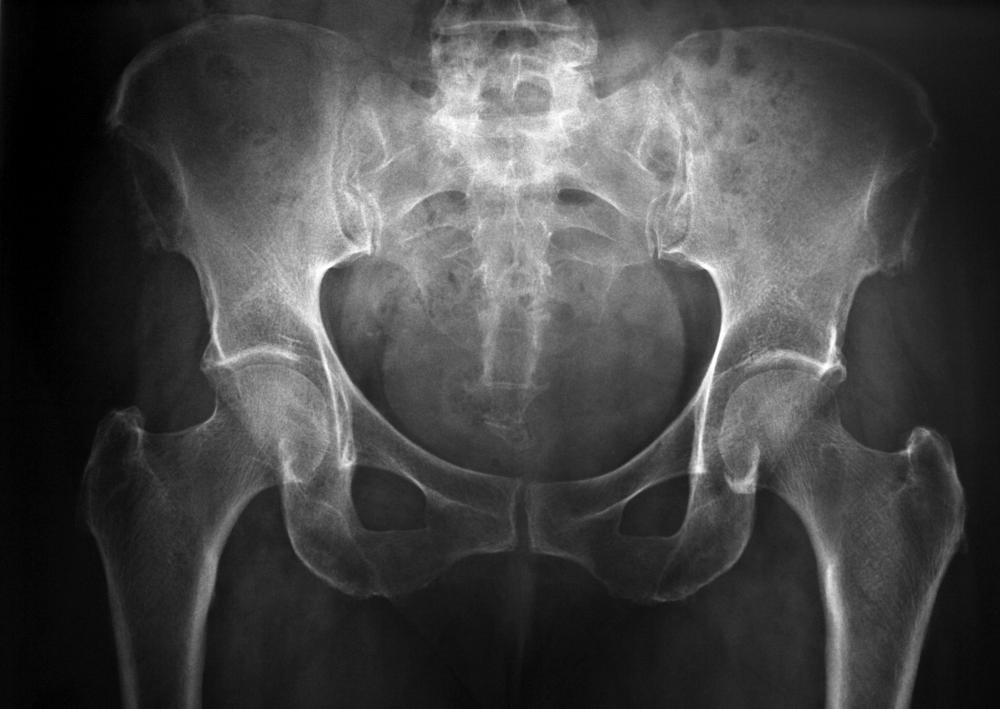At TheHealthBoard, we're committed to delivering accurate, trustworthy information. Our expert-authored content is rigorously fact-checked and sourced from credible authorities. Discover how we uphold the highest standards in providing you with reliable knowledge.
What is the FABER Test?
The flexion, abduction, and external rotation (FABER) test is an orthopedic screening to check for problems with the scaroiliac joint, including the hips and sacrum of the pelvis. A medical professional can conduct the non-invasive test in a clinic or hospital setting, and it is very rapid. Other diagnostic tests a healthcare professional may use can include medical imaging studies of the joint to check for inflammation and malformations. People may also refer to this technique as Patrick's test, and it is usually part of a routine musculoskeletal exam.
In the FABER test, the medical professional has the patient lie on his back on a table. In this face-up position, the patient's arms and legs should relax on the surface of the table. The medical professional takes the involved leg and bends it while also rotating it so the inside of the knee faces up. He or she places the foot on the opposite knee. With the leg in position, the medical professional can apply gentle pressure to the opposite side of the hip to keep the pelvis in place, while pressing down on the knee to push the bent leg towards the table.

Healthy patients should not experience pain or strain during this test, and the knee will slowly drop to the surface of the table. If a patient has a joint problem, it can cause pain in the groin, buttocks, pelvis, or back. The location of the pain during the test is an important clue about what part of the body is involved. The healthcare professional can manipulate the leg in other ways to collect more feedback and information.

Using the outcome of a FABER test and a patient interview, the medical professional can start to explore possible locations and causes of joint pain. X-rays and other images can provide information about the extent of inflammation or injury. Together, all of this material will help the orthopedist develop an appropriate treatment plan. This may be as simple as rest to allow a sore area to recover, or could involve surgery to treat serious inflammation or deformation of the joint.

During the test, it is very important to anchor the pelvis so the opposite side does not ride up as the healthcare professional pushes the knee down. People doing the test at home to check for joint problems should ask for help to make sure they do it correctly. If the pelvis can shift, it may mask pain because the joint will not be stretched during the examination. This will result in a false negative.
AS FEATURED ON:
AS FEATURED ON:















Discussion Comments
I had the Faber test done in the doctor's office and I am positive for the Fabers Test. The doctor wanted to inject me with cortisone which I did not get because I have severe Osteoporosis.
The doctor's suggestion was: The cortisone will not hurt you or your bones. I felt that I was treated like a retarded child. The doctor did not offer anything else. When I asked the doctor is there anything else he can do, his answer was only the cortisone shot. I was so disappointed with this doctor.
I also asked him if I had a labral tear. His answer was yes and there is nothing anybody can do. I also asked this doctor if this tear can cause an arthritic hip. He said yes and you will need a hip replacement sometime in the future. I think this doctor is not right in the head. Thanks for listening.
I recently had several spine and hip tests done, and this test was used, along with X-rays to determine why I was having pain.
It is interesting that such a simple test can show the doctors so much about what is not working properly. I am able to manage with proper exercises and have not had to have any kind of surgery.
Many people have probably had this test done, but didn't even realize what the name of it is.
I was experiencing some hip pain, and when I met with an orthopedic doctor, the FABER test was one of the things he did to try and figure out what was wrong.
Even though I do not have very good range of motion of the hip, the test was not painful. I had never heard of this test before, so was a little worried at first, but it was over with very quickly. I guess the word test made it sound worse than it really is.
Post your comments